Leveraging Optix™ to Assess the Effects of Climate Change on Global Trade and the Panama Canal
Introduction The Panama Canal is a critical pathway for global trade which facilitates billions of U.S dollars’ worth of trade annually. Despite incurring greater transit fees than alternatives, such as the Suez Canal, the Panama Canal remains the preferred shipping route for Southeast Asian goods destined for the U.S. East Coast because it reduces cargo time in transit by an average of six days. Today, climate change threatens the Canal’s ability to reliability service global demand and deliver the advantage of minimizing time-to-market. Specifically, drought has reduced the amount of freshwater available to operate the Canal’s system of locks, ultimately reducing the volume of cargo that can pass through the canal. Our analysts have used Optix and Automatic identification system (AIS) and water table data to investigate issue and demonstrate its potential impact on global trade.
Understanding AIS Data
Automated Identification System (AIS) is a maritime navigation and safety tool that allows vessels to broadcast their position globally to prevent collision, assist with search and rescue operations, and provide general situation awareness. The system’s data can be used to perform more advanced analytics, including estimating volume of oil tankers laden and in transit, globally. Companies, such as Spire Global collect AIS data from multiple sensors (satellites, ship-to-ship, and terrestrial) and leverage Optix to fuse these sources together into a common data stream and maritime picture. Optix stores this data in a low latent data architecture to enable rapid analysis of maritime traffic, ultimately providing information advantage to its users.
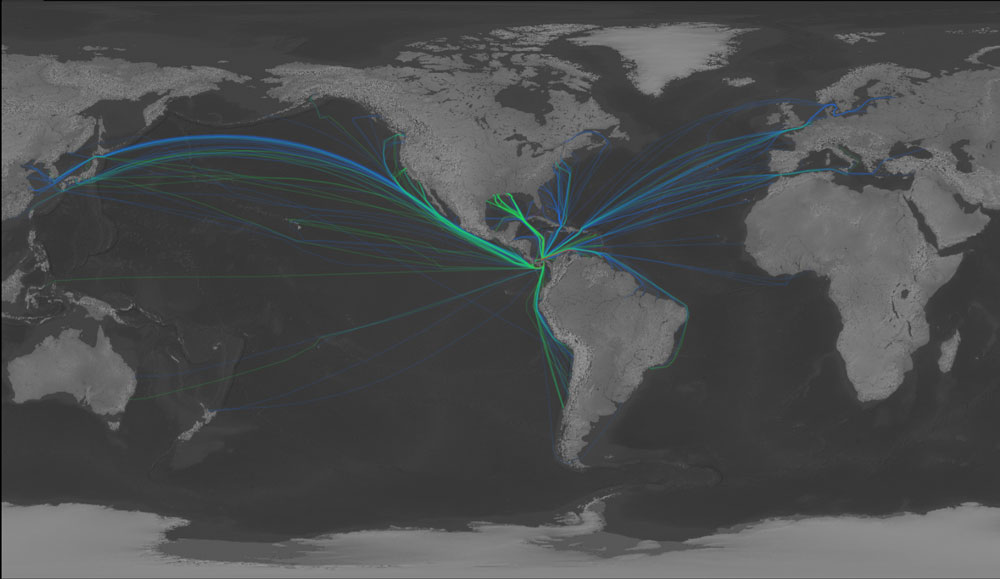
In Comes Optix ™
The Optix platform is a state-of-the-art data analysis and visualization tool designed to empower researchers, analysts, and decision-makers across various sectors. Optix leverages advanced computational capabilities to process large datasets, enabling users to uncover patterns, trends, and insights that might otherwise remain hidden in complex data landscapes. It integrates cutting-edge technologies such as machine learning, artificial intelligence, and high-performance computing, providing a robust framework for data-driven analysis.
The platform supports a wide range of applications, from scientific research, where it can help in understanding environmental changes, to finance and healthcare, where it aids in risk assessment. By offering powerful data analysis and visualization capabilities, Optix contributes significantly to enhancing the quality and speed of research and decision-making processes, making it a valuable tool in the arsenal of modern data-centric organizations.
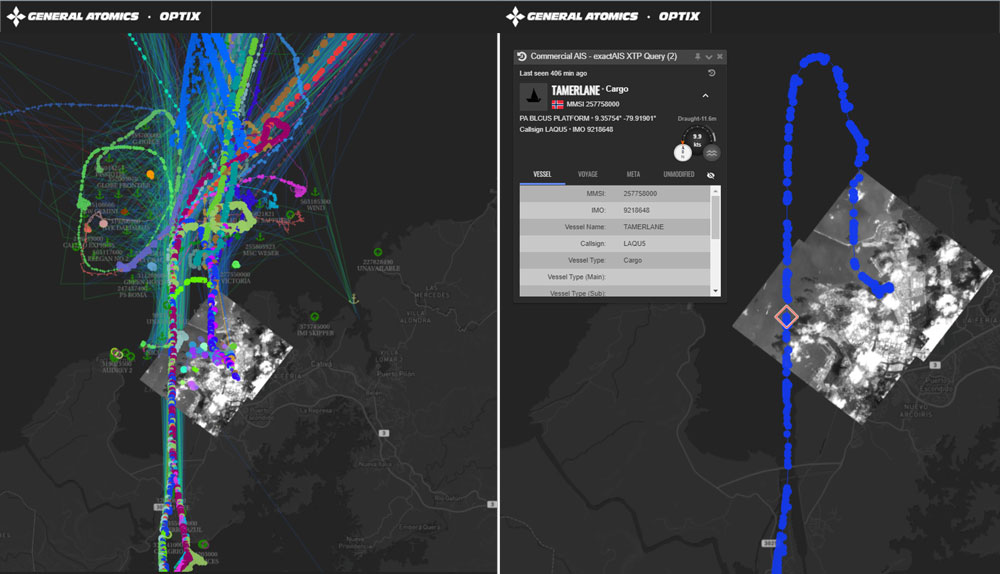
Climate Change, Water Levels, and the Canal
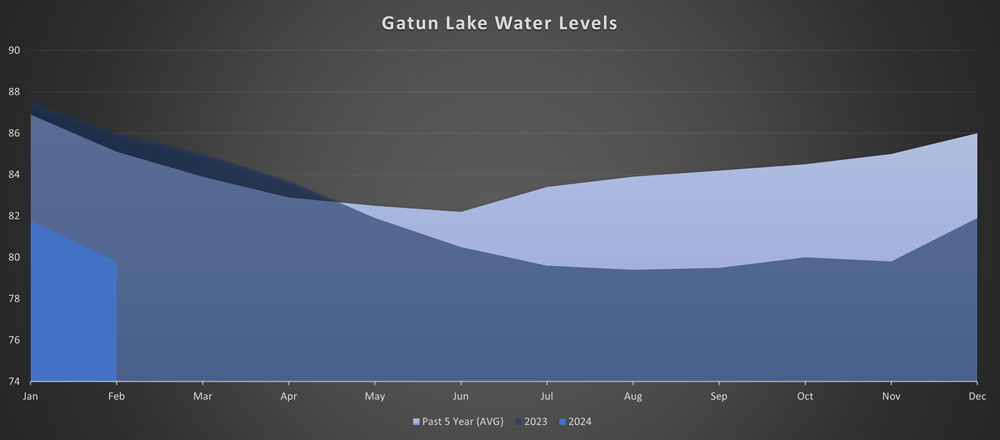
The Panama Canal’s system of locks is dependent upon the availability of freshwater from the Gatun Lake, which is man-made and solely resupplied by rainfall. A multi-year drought has reduced the volume of water available for operations. In January 2024, Panama Canal authorities reported the Gatun Lake measures six inches below its five-year average In response, the Panamanian authorities have had to implement measures to preserve water while minimizing impact to flow of commerce, which include restricting the number of vessels able to transit the Canal annually . It is anticipated that Panama will further restrict the tonnage each vessel may have during transit, by April 2024.
These restrictions come at a cost to Panama, which is expected to see a decrease in earnings of $200M in 2024 as corporations and governments prioritize alternatives to the Canal. Using Optix and AIS data, we were able to confirm a corresponding decline in transiting vessels through the Panama Canal beginning late 2023 in-line with the on-going drought (Figure 6)
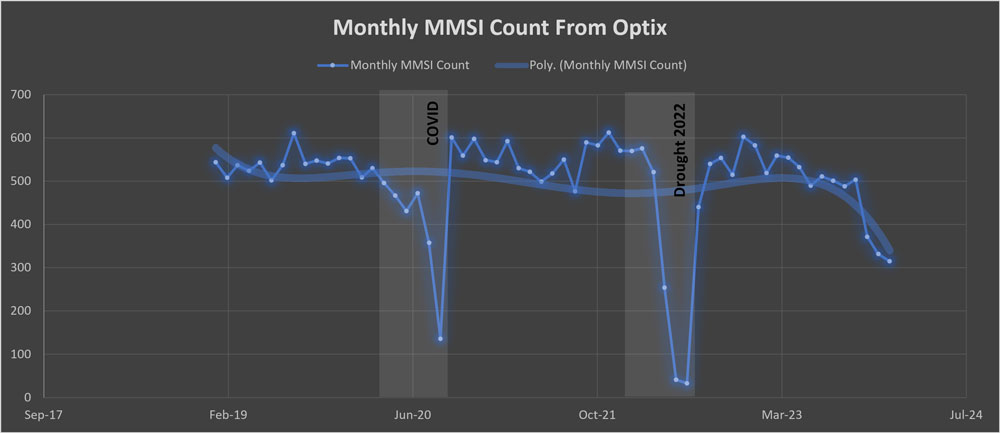
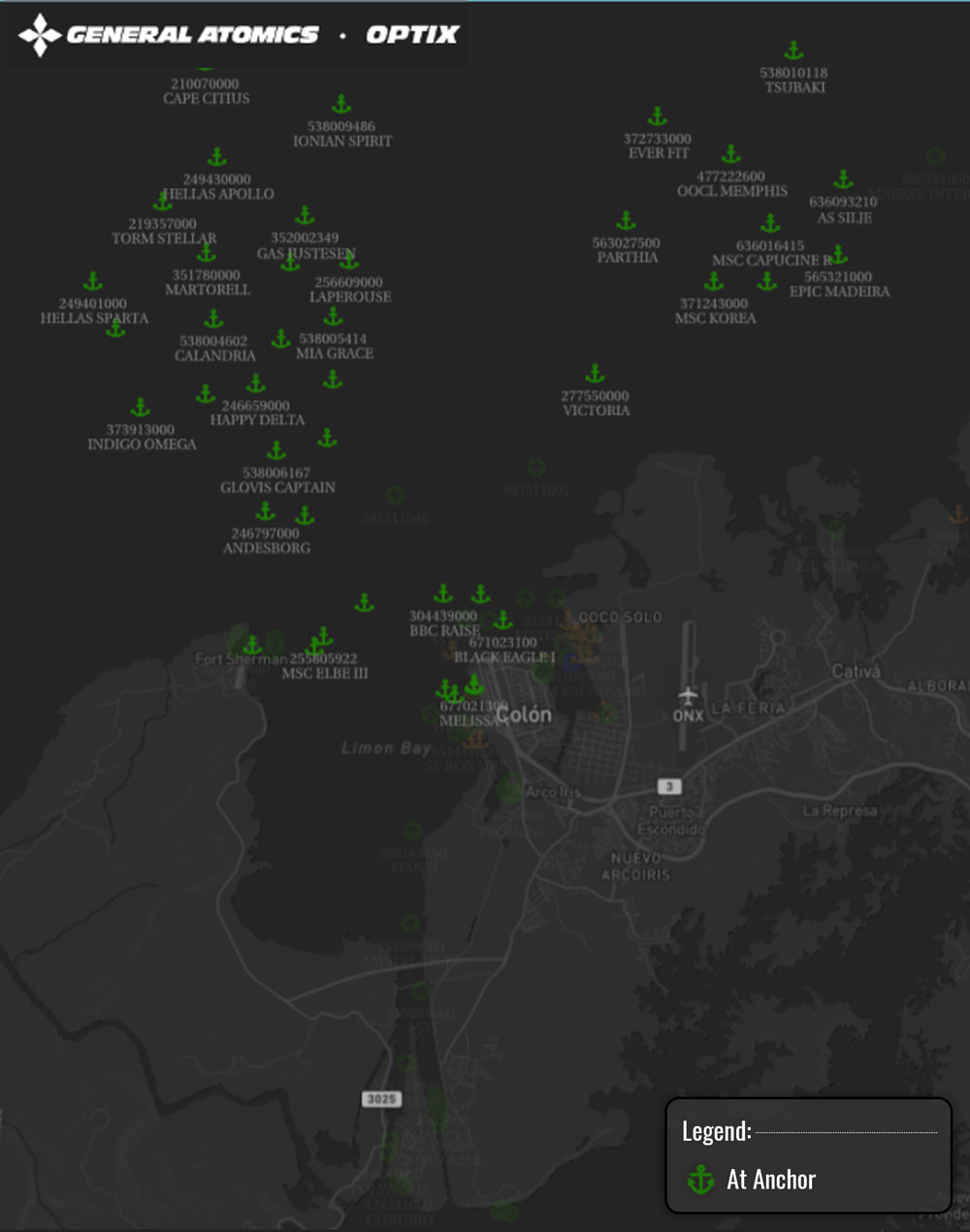
Once a vessel obtains authorization to transit the canal, it is often required to lighten its load for canal transit. An average cargo vessel transiting the canal requires 200 million liters of freshwater. By reducing the weight of the cargo, the ship displaces less water - referred to as ‘draft’. Lighter ships require less water, but incur costs associated with rail and handling. Further, this approach requires additional time in transit and amplifies bottlenecks. Figure 7 illustrates the trend of ships offloading cargo to meet these draft requirements, showcasing the direct influence of climate variations on the canal's operational efficiency, and highlighting the broader implications for international maritime logistics.
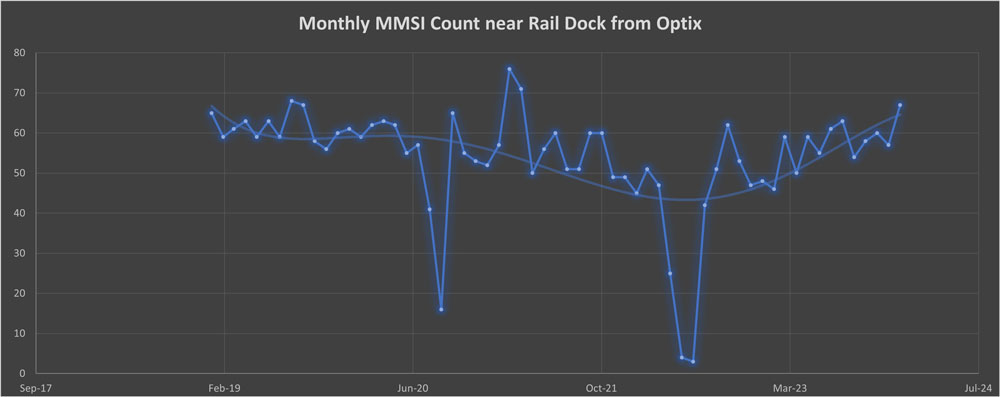
Economic and Sustainability Outlook
The economic repercussions of climate change on trade through the Panama Canal are significant. Panama’s restrictions address many near-term resource challenges, but ultimately increase the transportation cost per ton for cargo. These increased costs ripple through the supply chain, influencing everything from the prices of raw materials to consumer staples. In sectors such as agriculture, where timing is paramount, delays can disrupt market dynamics significantly.
Compounding the challenges facing the Panama Canal are the recent Houthi attacks in the Red Sea. Shipping companies now must also consider the risks of transiting the Suez Canal as an alternative to the Panama Canal. As a result, some may choose to reroute their vessels around Cape Horn or take alternative routes that, while safer, are longer and more costly. Since November of 2023 the amount of vessels taking alternative paths have increased likely due to varying environmental factors like drought or geopolitical strive. These detours elevate fuel consumption and greenhouse gas emissions, further exacerbating the environmental impact.

Moreover, the delays in reaching markets due to these detours can disrupt global supply chains across various industries, from electronics to manufacturing. These sectors depend on the punctual delivery of essential raw materials and components. For instance, in 2020, a leading electronics manufacturer experienced significant delays in receiving key components, impacting its production timelines and product launch dates (Figure 8). American grain exporters, too, have faced heightened transportation costs and competitive disadvantages on the global stage, illustrating the extensive economic impacts of both climate change and regional conflicts
Optix Provides Information Advantage
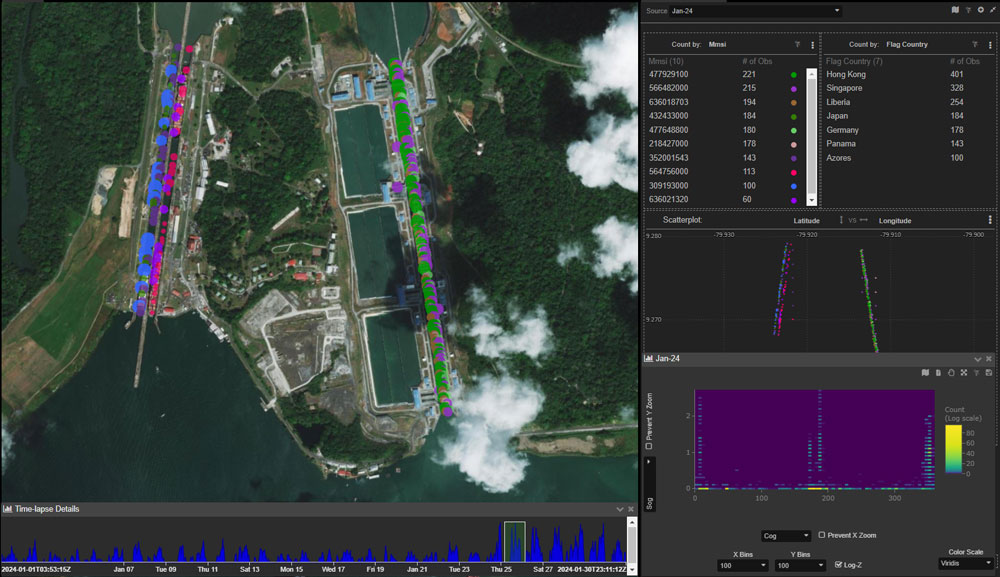
As climate change continues to threaten critical infrastructure and trade, tools like Optix will be invaluable to organizations seeking to navigate the consequences. By leveraging the power of real-time data and historical analytics, Optix not only enhances understanding of maritime traffic patterns but can also empower operational security, safeguarding of supply chains, and tracking support in favor environmental sustainability. In this use case, we demonstrated how Optix enables the visualization of historical patterns and the monitoring of real-time events, providing insights into maritime traffic flow through an artery of global trade. Whether you're strategizing for defense readiness, securing maritime operations, optimizing supply chains, or advocating for environmental protection, Optix equips you with the data-driven intelligence needed to thrive in a changing world.
Embrace Optix to navigate the complexities of today's global challenges with confidence and foresight. Contact us at info@ccri.com to innovate together!
Source- (2023) It’s time for shippers using Panama Canal to make decisions. https://www.freightwaves.com/news/viewpoint-its-time-for-shippers-using-panama-canal-to-make-decisions
- (2024) How attacks on ships in the Red Sea by Yemen’s Houthi rebels are crimping global trade. https://apnews.com/article/red-sea-yemen-houthis-attack-ships-f67d941c260528ac40315ecab4c34ca3
- (2024) U.S. Trade and the Impact of Low Water Levels in Gatun Lake and the Panama Canal. https://www.bts.gov/data-spotlight/us-trade-and-impact-low-water-levels-gatun-lake-and-panama-canal#:~:text=In%20addition%2C%20the%20Panama%20Canal,period%20they%20are%20currently%20predicting.&text=As%20a%20result%20of%20the,restrict%20ship%20transits%20and%20draft
- (2024) Statistics https://pancanal.com/en/statistics/
- (2023) Panama Canal’s Continuing Draft Reductions Pose Threat to Trade. https://maritime-executive.com/article/panama-canal-s-continuing-draft-reductions-pose-threat-to-trade
- (2023) How Houthi attacks in the Red Sea impact shipping in the Suez Canal. https://www.reuters.com/markets/commodities/how-are-red-sea-attacks-impacting-shipping-suez-canal-2023-12-18/
- (2023) Panama Canal Water Levels to impact Westbound Trade Well Into 2024. https://www.globaltrademag.com/panama-canal-water-levels-to-impact-westbound-trade-well-into-2024/
- (2023) Global ag trade faces disruption: Panama Canal imposes more restrictions on vessels numbers. https://www.feednavigator.com/Article/2023/11/06/Global-ag-trade-faces-disruption-due-to-Panama-Canal-limits
- (2023) Panama Canal auction smashes vessel transit record as slot goes for $2.85m. https://www.tradewindsnews.com/gas/panama-canal-auction-smashes-vessel-transit-record-as-slot-goes-for-2-85m/2-1-1546233